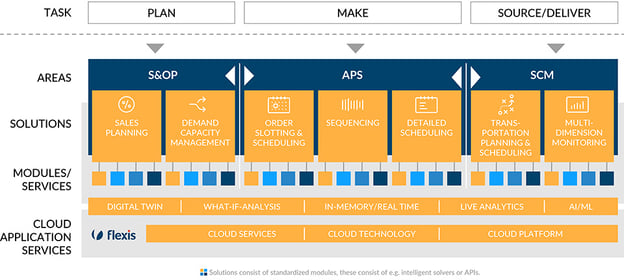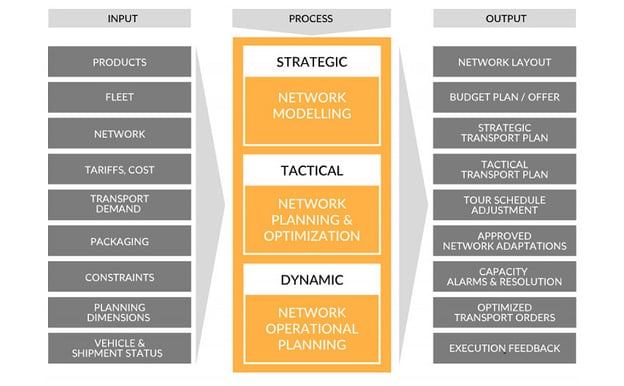Beyond Digitalization: The Collaborative Path To Supply Chain Optimization
Keith LaBotz - July 14, 2023

Digitalization promises alluring rewards for supply chains: optimization, maximizing profitability, efficiency, sustainability, customer satisfaction, resilience, and much more. With the global supply chain management software market projected to nearly double to $39 billion by 2028, you might expect the same surge in digital transformation success stories. Let's have a closer look:
Despite booming investment in digitalization, a recent study from PwC reveals a significant disparity between the goals and outcomes for digital supply chain initiatives. Growth (53%) and cost optimization (51%) top the list of objectives, but a mere 17% of companies realized their ambitions.
So what does this mean for your company? The wide gap represents a significant opportunity for companies that can discern why optimization remains elusive.
The failure of digital transformations stems from maintaining a legacy mindset with the digital supply chain. A digital supply chain network requires a radical change in perspective and methodologies. Without adopting a new mental model, a company will implement digital solutions as performance upgrades to legacy processes, and meaningful optimization will never materialize.
The cornerstone of digital supply chain optimization lies in a collaborative approach that spans multiple business units and enterprises. The focus shifts to network optimization instead of a single enterprise, and a more holistic perspective is required. Optimization of the entire network might entail restructuring relationships, e.g., introducing multi-modal transportation networks, or relocating warehouses.
Establishing a framework for digital collaboration can steer your mental model in the right direction and help ensure the success.
This article outlines a few basic steps for establishing this framework so your company's digitalization efforts bolster supply chain optimization and deliver a significant competitive advantage.
The Link Between Digitalization, Collaboration, and Optimization
Digitalization should ideally lead to optimization and this is best achieved throuhg collaboration:
- Digitalization refers to automating business processes by leveraging digital solutions and sharing data across systems. The potential benefits include enhancing efficiency, productivity, profitability, sustainability, customer satisfaction, and resilience.
- Collaboration means multiple stakeholders working together to achieve a common goal. Digitalization enables different entities to exchange data, facilitating collaboration.
- Optimization Digital optimization is the improvement of products, services, workflows and processes through the use of digital technology.
Digitalization enables collaboration, making it possible for supply chain planning to optimize the entire network. By integrating digital solutions with SCM planning, digitalization can consistently support the goals of collaboration and optimization.
The Optimization - Logistics Connection
In a digital supply chain, transportation is the bridge for transferring goods between collaborating supply chain partners.
A delayed shipment can unravel the perfect plan, and collaboration hinges on reliable transportation. Supply chain optimization is only attainable with dependable transportation, underscoring its necessity as an integral part of SCM planning.
An Example SCM Planning Solution
flexis AG’s suite of integrated solutions exemplifies an SCM planning solution with a holistic optimization approach and a strong emphasis on transportation. It synchronizes supply chain functions across various enterprises, harmonizing forecasting, sourcing, production, and distribution for maximum effect.
As a cloud-based platform for optimization, supply chain partners can readily integrate, extending this framework across a company’s supply chain.
Here are a few notable capabilities of the solution:

- Live Analytics: This potent tool uncovers trends, computes probabilities, and reveals unseen connections among operational variables. Integrating these insights into planning and running what-if simulations opens up a broader range of optimization opportunities for maximum profit.
- Transportation Planning and Scheduling: The real value of optimization shows up in execution, and transportation plays a pivotal role here. Transportation plans continuously adjust to changing conditions, protecting collaboration from disruption and maximizing profitability.
- Vehicle Routing and Scheduling (VRS): Dynamic route planning is crucial for companies managing a transportation fleet. This module optimizes vehicle routes for cost-efficiency and resource utilization, thereby increasing shipping capacity, reducing costs, and minimizing the carbon footprint.

To appreciate how this solution can facilitate collaboration, consider the case of a leading book wholesaler outsourcing to independent subcontractors. The company couldn't maintain complete visibility over the delivery process because of the disparate technologies subcontractors used. As a result, there were issues with strategic vulnerability, difficulty with continuous improvement, inequitable pricing, and lower levels of customer service.
flexis' Vehicle Routing and Scheduling (VRS) solved the problems with a collaborative transportation process that optimized last-mile logistics. The company exceeded customer expectations while improving transportation costs and reliability.
Conclusion
Companies can realize a substantial competitive advantage by using sophisticated SCM planning solutions like those from flexis to establish a framework for optimization. Optimization can begin in the enterprise immediately and extend to a collaborative process to guide supply chain partners. With this framework, digitalization efforts can align and contribute to overall optimization.
If you want to learn more get your Guide to Logistics 4.0
In this Guide you will learn:
-
Why a strategic process in transportation planning is a top priority for digitalization
-
What megatrends will increase supply chain volatility
-
How to manage it
LATEST POSTS
- Understand Why Production Planning Needs Specialized Solutions
- Understand Circular Economy in The Manufacturing Industry
- How Can Industry 4.0 IT Integration Be Achieved Smoothly?
- The Significance of Order Sequencing in Discrete Manufacturing
- How to improve your Supply Chain Management: The Power of Control Towers



